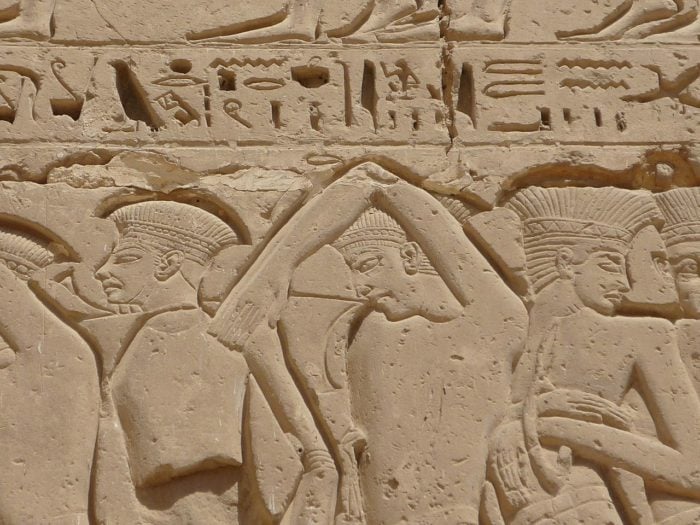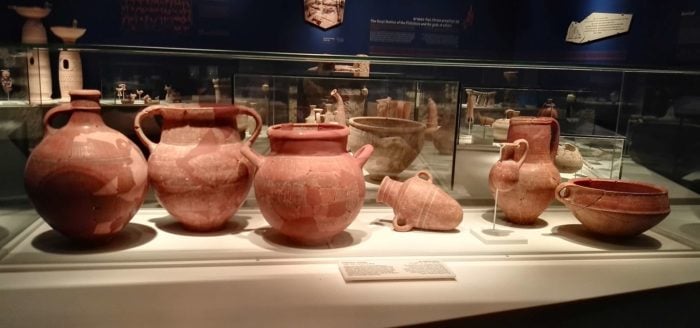
Philistines were very likely of Greek origin, according to a recent DNA study that traces the origins of the ancient villains in the Eastern Mediterranean.
This is actually the first study of DNA recovered from an ancient Philistine cemetery, as scientists wanted to find the roots of the infamous people of the Hebrew Bible, according to a report in National Geographic.
In the Old Testament, Philistines are presented as being of a different race from the Hebrews, coming from the “Land of Caphtor,” today’s Crete.
Likely originating out of Crete, the Philistines later took control of the shoreline of today’s southern Israel and the Gaza Strip beginning in the 12th century BC.
A cemetery gives clues to Philistines’ origins
In 2016, scientists discovered an ancient cemetery near Ashkelon, Israel, containing approximately 150 dead bodies inside oval graves.
A groundbreaking 2019 genetic study showed that the genes of the buried belong to a European gene pool unlike the Semitic Levantine gene pool of later inhabitants of the area.
According to scientists, there was a European-related gene flow that took place during the transition from the Bronze to the Iron Age, which supports the theory that Europeans migrated to the Middle East.
The study specifically states:
An international team, led by scientists from the Max Planck Institute for the Science of Human History and the Leon Levy Expedition, retrieved and analyzed, for the first time, genome-wide data from people who lived during the Bronze and Iron Age (~3,600-2,800 years ago) in the ancient port city of Ashkelon, one of the core Philistine cities during the Iron Age. The team found that a European derived ancestry was introduced in Ashkelon around the time of the Philistines’ estimated arrival, suggesting that ancestors of the Philistines migrated across the Mediterranean, reaching Ashkelon by the early Iron Age.
The National Geographic report says that the DNA analysis from human remains covered three different time periods.
The periods of these burials include the Middle and Late Bronze Age (about 1650 to 1200 BC), thus pre-dating the arrival of the Philistines, while infant burials have been determined to have been from the late 1100 BC following the arrival of the Philistines. Finally, there are also individuals that were buried in the Philistine cemetery in the later Iron Age (hence from the 10th and 9th centuries BC).
The early Iron Age DNA samples include proportionally more “additional European ancestry” in their genetic signature—at roughly 14 percent—than in the pre-Philistine Bronze Age samples, which were 2 to 9 percent.
While the origins of the European genes are inconclusive, experts have determined that they were most likely from Greece, Crete, Sardinia, or the Iberian peninsula.
Many researchers also tie the presence of the Philistines to the exploits of the Sea Peoples, tribes that raided the eastern Mediterranean at the end of the Late Bronze Age in the 13th century and early 12th century BC.
This supports the theory that the Philistines, who were possibly Greek, embarked on their journey from Europe as migrants and then settled down in Ashkelon in the 12th century BC.

The Biblical wars of Philistines and Israelites
The arrival of the Philistines in the early 12th century BC is marked by pottery resembling that of the ancient Greek world, as well as the use of an Aegean script and a notable consumption of pork.
Archaeologists agree that the Philistines were unlike their Hebrew neighbors, and relations between these peoples were marked by frequent wars.
In the Bible, Philistines are portrayed as warmongers and enemies of the Israelites.
The giant, Goliath, who fought against and was killed by a young shepherd later known as King David, is the most well-known Philistine in the Bible.
Furthermore, Delilah, the beautiful woman who seduced and cut the hair of the powerful Israelite, Samson, in order to drain him of his strength, is a Biblical example of the cunning nature of the Philistines.
The European/Greek genes of the Philistines fade away
In comparing DNA recovered from the cemetery at Ashkelon only a few centuries after the infant burials, scientists found that the European characteristics of the Philistines had disappeared.
“This European related genetic component was subsequently diluted by the local Levantine gene pool over the succeeding centuries, suggesting intensive admixture between local and foreign populations. These genetic results, published in Science Advances, are a critical step toward understanding the long-disputed origins of the Philistines” the study states.
Later Philistine burials were found to have genetic signatures very similar to local populations who had lived in the region before the arrival of the Philistines.
The DNA study shows that the European DNA of the Philistines disappeared within 200 years, most likely because they intermarried widely, and their genetic signature was diluted within the local population.
Findings reinforce the theory that the origin of the Philistine population was likely Greek, Cretan, or Sardinian.
Along with the archaeological discoveries, the DNA study solidifies the theory that Philistines were probably Greeks—either from mainland Greece or Crete—who later mixed with local Levantine populations from the early Iron Age onward.
The Philistines were genetically assimilated to the local population; yet, they retained the distinct cultural traits that separated them from their neighbors for more than five centuries.
Philistines lived in the area for more than five centuries until they were finally conquered by the Babylonians in the year 604 BC—several years before the 598 BC conquest of the Hebrew people by the Babylonians and their subsequent exile there.



